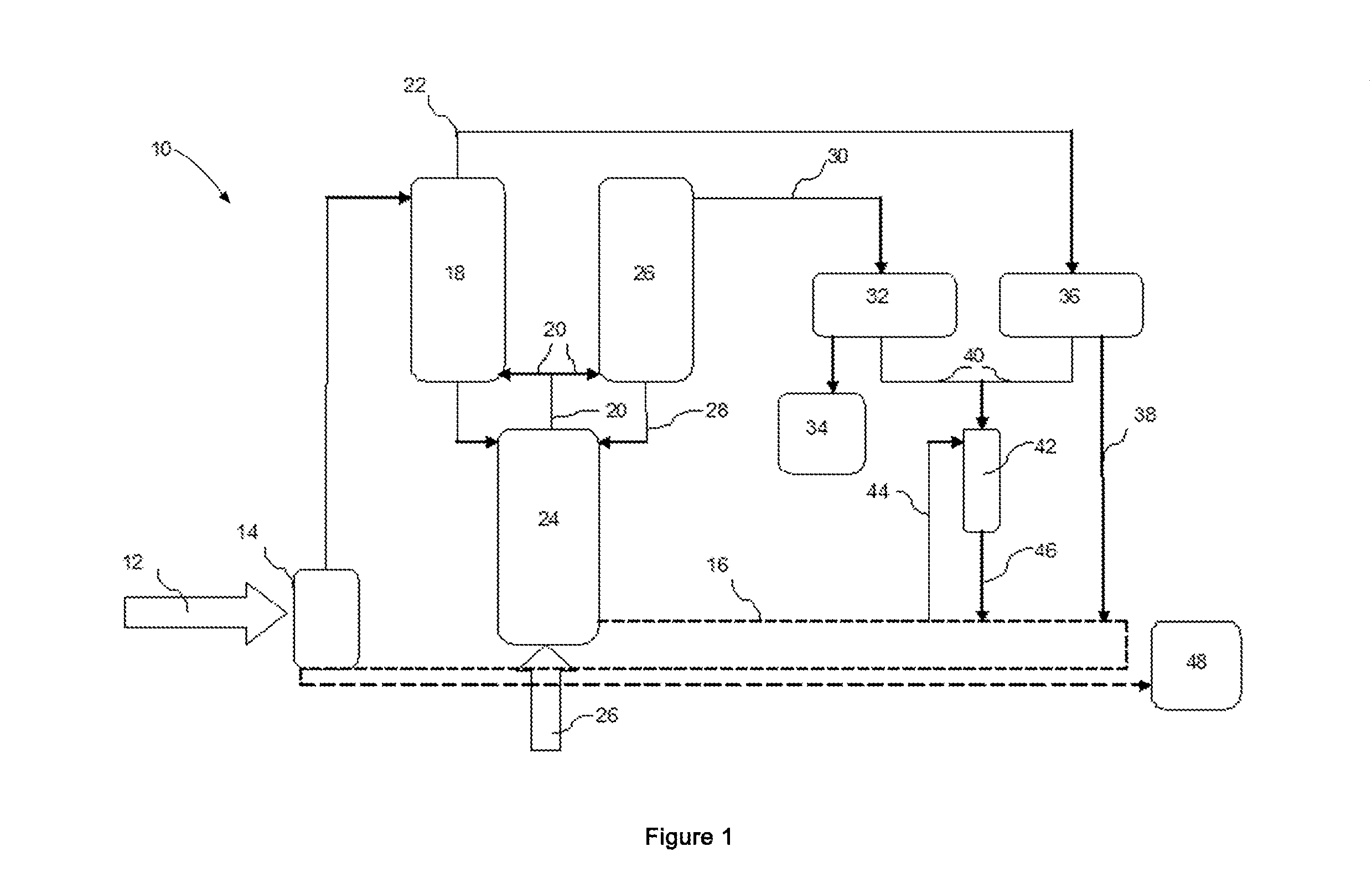Process and Apparatus for the Reduction of Alcohol in Fermented Beverages
a technology of fermented beverages and alcohol reduction, which is applied in the direction of alcoholic beverage preparation, vacuum distillation separation, distillation/rectification of fermented solutions, etc., can solve the problems of significant water loss, heat damage to wine feedstock, and consequent rise in the operating temperature of the evaporation chamber, so as to reduce alcohol
- Summary
- Abstract
- Description
- Claims
- Application Information
AI Technical Summary
Benefits of technology
Problems solved by technology
Method used
Image
Examples
Embodiment Construction
[0034]With reference to the FIG. 1, a process for reducing alcohol in a fermented beverage 10, such as wine, according to a preferred embodiment of the invention includes the steps of: (i) removing aromatics from the wine; (ii) removing alcohol from the wine; (iii) refluxing a portion of the alcohol removed from the wine to increase the alcohol concentration of the alcohol vapour and return at least a portion of the condensed / recovered water to the wine; and (iv) condensing the aromatics removed from the wine and returning at least a portion thereof to the wine.
[0035]The process 10 starts by passing wine feedstock 12 through a pre-heater 14 to pre-heat the wine feedstock 12 to a temperature between 40° C. and 60° C. The pre-heater 14 transfers heat from de-alcoholised wine 16 that has previously passed through the process 10.
[0036]The pre-heated wine feedstock 12 is then introduced into a first distillation column 18 through an inlet at or near the top of the column and permitted to...
PUM
| Property | Measurement | Unit |
|---|---|---|
| temperature | aaaaa | aaaaa |
| temperature | aaaaa | aaaaa |
| operating temperature | aaaaa | aaaaa |
Abstract
Description
Claims
Application Information
 Login to View More
Login to View More - R&D
- Intellectual Property
- Life Sciences
- Materials
- Tech Scout
- Unparalleled Data Quality
- Higher Quality Content
- 60% Fewer Hallucinations
Browse by: Latest US Patents, China's latest patents, Technical Efficacy Thesaurus, Application Domain, Technology Topic, Popular Technical Reports.
© 2025 PatSnap. All rights reserved.Legal|Privacy policy|Modern Slavery Act Transparency Statement|Sitemap|About US| Contact US: help@patsnap.com

